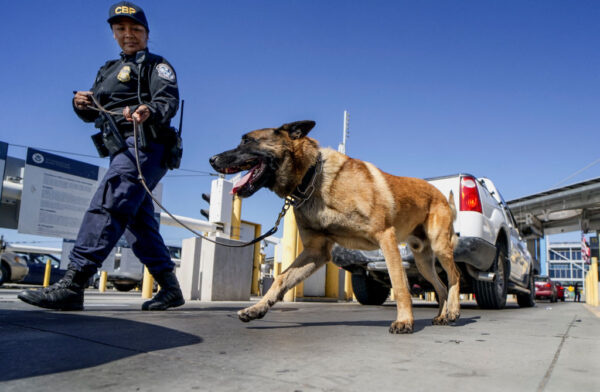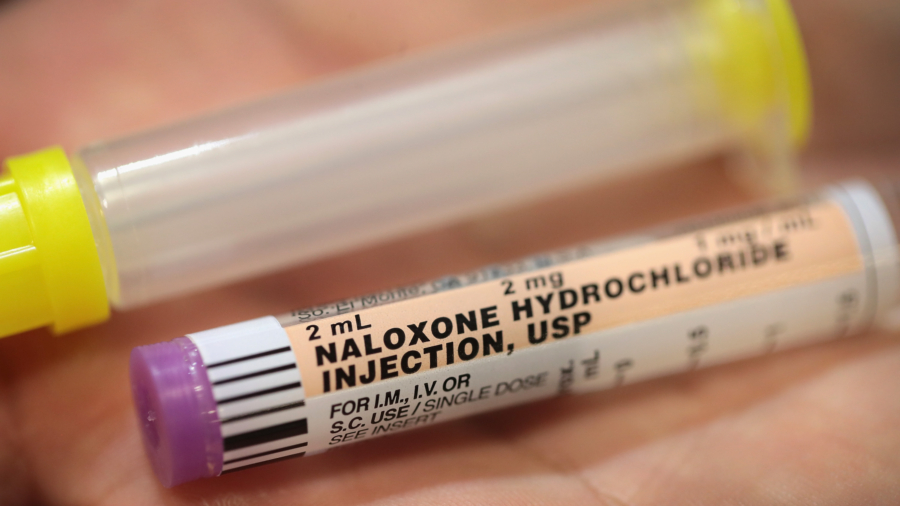The U.S. Food and Drug Administration (FDA) will give priority status to an over-the-counter opium overdose antidote nasal spray submitted for review, the pharmaceutical company said Monday.
The over-the-counter naloxone nasal spray is needed to combat the synthetic opioid fentanyl, which is linked to tens of thousands of annual overdose deaths in the United States. California lawmakers recently introduced a bill to require the drug on K-12 school campuses after several students overdosed.
RiVive, a nasal spray that delivers 3.0 mg of naloxone, is made by Harm Reduction Therapeutics, Inc. (HRT), a non-profit drug company. Public health experts and the FDA have called for naxolone to be made available as an over-the-counter drug amid the opioid crisis in the United States.
Priority Review
The drug has been designated for the FDA’s six-month priority review process.
Drugs on the fast track are considered to provide significant improvements in the safety or effectiveness of the treatment, diagnosis, or prevention of serious conditions, according to the FDA.
HRT said it expected to hear from the FDA about its opioid overdose antidote by April 28, 2023.
“The opioid epidemic is an ongoing national tragedy with over 200 Americans dying daily,” HRT stated in a release. “As this public health crisis has unfolded, naloxone, which was originally approved by FDA in 1971 to reverse opioid overdoses, has remained an expensive product available by prescription only or through standing orders at pharmacies on a state-by-state basis.”
The FDA called for drug companies to submit certain naxolone products for review that could be safe and effective for over-the-counter use amid the ongoing opioid crisis.
Urgent Need
Dr. Michael Hufford, HRT’s co-founder and CEO, said there was an urgent need for an over-the-counter naxolone product when he formed his company in 2017.
“Now, five years later and driven by our success in advancing RiVive toward FDA approval, the public health landscape is beginning to evolve, with OTC naloxone hopefully set to become a reality,” Hufford said.
The drug was supported “by a Phase 1 clinical trial demonstrating that RiVive produces a 3-fold higher systemic exposure with comparable early absorption to the reference naloxone product, as well as robust Human Factors Validation work demonstrating that laypeople are able to administer RiVive in a simulated emergency overdose situation,” according to the release.
The company has entered a commercial supply deal with a contract manufacturer in anticipation of FDA approval. HRT expects to launch the drug in the United States in early 2024.
California Bill
The crisis is so bad that California lawmakers introduced a bill requiring at least two doses of naloxone on school campuses.
According to data from the state Department of Public Health, fentanyl was responsible for 5,722 deaths in California 2021. In September, a 15-year-old girl died from an overdose, and seven students also overdosed on fentanyl, according to police.
Local officials declared an “urgent crisis” and vowed to prevent further student deaths from opioid overdoses.
On Dec. 5, newly-elected California Assemblyman Joe Patterson (R-Rocklin) introduced two bills to combat the crisis—one to require schools to carry two naloxone nasal spray doses on campus and another which would give anyone convicted of fentanyl trafficking written notice that they could be charged with murder if another person died as a result of their actions.
“The real epidemic in my district is kids’ access to deadly counterfeit pills,” Patterson said in a Dec. 5 statement, adding that fentanyl-related deaths in his Placer County have risen 450 percent since 2019.

Enough Doses ‘to Kill Every American’
More than 10,000 pounds of fentanyl powder and more than 50.6 million fake prescription pills laced with fentanyl in 2022 were seized in the United States this year, according to the Drug Enforcement Agency (DEA).
The agency’s laboratory estimated the seizures account for more than 379 million potentially deadly doses of fentanyl.
According to the DEA, many of the drugs were manufactured in Mexico using chemical ingredients supplied by Chinese chemical plants in the calendar year 2022, accounting for over 379 million doses of the drug.
Anne Milgram, DEA administrator, said the agency seized “enough deadly doses of fentanyl to kill every American.”
It is almost impossible for the untrained eye to tell the difference between legitimate prescription pills and fake prescription pills laced with fentanyl, the DEA said.
Overdoses in the United States have risen to over 100,000 annually.

China Behind Crisis
China’s role in the North American fentanyl crisis exceeds that of other countries and governments, according to an expert.
“China remains the principal supplier of precursor chemicals for the production of fentanyl not just in the United States, but across all of North America,” said Vanda Felbab-Brown, author of a report on China’s role in fentanyl supply chains, in March.
“This includes Canada, which is now dealing with as devastating an opioid crisis as the United States, and we are also seeing the spread of fentanyl in various parts of Mexico,” she continued.
Felbab-Brown’s report revealed a sprawling Chinese opioid industry involving hundreds of thousands of manufacturers and distributors operating without licenses and making their operations behind shell companies.
Chinese regime officials blame the issue on social problems in the United States, not its lax regulations.
Michael Washburn and Micaela Ricaforte contributed to this report.
From The Epoch Times


